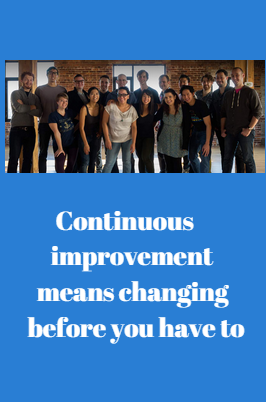Tag: what is branding strategy
Branding in Marketing: 15 Ideas to Supercharge Your Marketing
As marketing types, we confess to having a visual bias when it comes to an expression of branding in marketing. We tend to experience a brand primarily through our eyes, by watching how it draws us into its world. And when we’re working with clients on a creative branding project, one of our first steps…

Marketing Branding: Know Secrets to Continuous Improvement Strategy?
Is your business doing very well, but you are still wondering whether you should be making changes for continuous improvement? Like for a marketing branding strategy for continuous improvement? We recently received that question from Grace at Fresh Books. It is a frequent question we receive from clients. Related: Target Market … How to Target for…